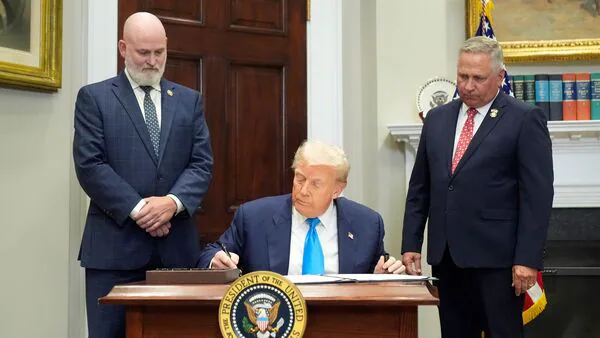
“I don’t care what India does with Russia… they can take their dead economies down together.”
— Donald J. Trump, July 30, 2025.
The trade partnership between India and the United States just hit rough weather. On July 30, Donald Trump announced a 25% tariff on all Indian exports to the U.S., effective August 1.
This is no longer a diplomatic warning. It’s a direct economic strike—and the biggest test yet for India’s “strategic autonomy.”
From Warning to Action: The Tariff Is Real
Trump’s new trade policy makes it clear: if a country trades with Russia, it will now have to pay a price to trade with America.
How India Has Responded
The Indian government has not announced any direct retaliation yet. l
- Offering limited market access to the U.S. in areas like pharmaceuticals and dairy
- Protecting Indian exporters through tax relief and emergency credit
- Pushing for talks at the upcoming G20 Trade Ministers’ Summit (August 5–7)
A senior official from the Ministry of Commerce told Reuters:
We are reviewing our legal options under WTO rules.”
| Sector | 2024 U.S. Export Value | Impact of 25% Tariff |
| Gems & Jewellery | $10.5 Billion | Orders expected to drop 15–20% |
| Textiles/Apparel | $8.6 Billion | U.S. buyers may cancel shipments |
| Pharmaceuticals | $6.9 Billion | Loss of competitive pricing |
| Auto Components | $3.2 Billion | Production cuts, delayed orders |
| Leather Goods | $2.4 Billion | MSMEs face major payment issues |
Over 40% of these exports come from MSMEs (small and medium businesses), which employ 4.5 million workers in places like Surat, Tirupur, Ludhiana, and Agra.
If the tariffs continue beyond a few months, experts from CRISIL and Nomura estimate that India’s GDP growth in FY26 could fall by 0.4–0.5%.
Diplomatic Dilemma: WTO or Concession?
India now faces difficult choices. It can:
- File a complaint at the World Trade Organization (WTO)
- Try to negotiate relief by expanding U.S. market access in selected areas
- Move closer to BRICS and Global South partners for alternative trade arrangements
“We’re sending a message to Russia by hitting its enablers in the pocket.”
What Are Indian Farmers and Politicians Saying?
The ripple effect is already visible:
- Brazil and Turkey, both major buyers of Russian oil, are closely watching India’s next move
- China has rejected the U.S. warning outright, calling it “coercive diplomacy”
This tariff is not just about India—it may redefine global trade relationships.
What Happens Next: Key Dates to Watch
- August 1 – Tariff begins: Indian goods will now face a 25% tax at U.S. entry ports
- August 5–7 – G20 Trade Ministers’ Meeting in Jakarta: India may negotiate in backchannels
- August 8 – Ceasefire deadline: If Russia doesn’t comply, 100% tariffs may begin
- August–September – India must choose: retaliate, concede, or find an alternative route
Final Word: The Cost of Neutrality
India has long followed a strategy of balancing its international relationships—trading with the U.S., buying oil from Russia, and cooperating with China on supply chains.
With the 25% tariff in place and bigger penalties looming, India must decide: will it change course or stand firm?
“In a world ruled by tariffs, tweets, and power politics—neutrality has a cost. India just got the bill.”
FOR MORE BLOGS –beyondthepunchlines.com

 Add to favorites
Add to favorites







